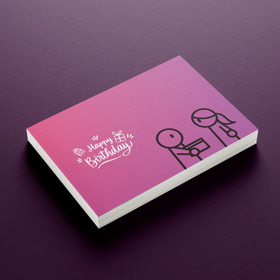on all orders

Onam - a harvest festival of Keralites
Celebrations evoke myriad memories in every person about the land he was upbrought. The scent of reminiscence is swept past the nostrils of the dear people of Keralam, when the first month of the Malayalam calendar hits with the warm breezy air of the Onam festival, marking the beginning of a new year. The ten-day-long celebration is one of the key features and the face of the southeast coast of an Indian state. A reminder of myth detailing the values of sacrifice, promise, goodness, peace, and hope; Onam upholds the dual duties of instruction and delight. The endearing festival is a symbol of bonding and bliss, cutting across and crossing over to unite all sections of people.
Onam, also named Thrirvonam is a harvest festival of Keralites that often falls in August or September. It is the welcoming of the asura king Mahabali back to earth, who owned the right to visit his people out of his goodwill from his nemesis Vamana. The legend explains the discomfiture experienced by the Gods in consequence of the growing popularity of the asura king Mahabali, who raised his kingdom to a prosperous, content and honest state. The Gods conspired to tarnish and tumult the peace-loving kingdom by eliminating the beloved Daitya ruler of Kerala who owned heaven and earth. Lord Vishnu transformed into Vamana and approached the generous Royal requesting him to provide three steps of land while conducting Ashvamedha Vedic sacrifices. The king wholeheartedly granted the wish only to realise it was Almighty himself. Vamana shape-shifted to a humongous being, taking earth with a whopping step and heaven with another. The astounded king bowed down his head for the giant lord to claim his third step, thereby effectively sending the beloved ruler to the netherworld, with an offer to revisit his land once a year, marking the celebration of Onam.
Onam is widely celebrated by the natives of Keralam, inside and outside the state. Though it predominantly remains a Hindu festival, other religions too take part in the celebrations, encompassing varied sections of people to commemorate the return of Mahabali in the land. The ten days falls on the following stars of the month, namely Atham, Chithira, Chodhi, Vishakam, Anizham, Thriketa, Moolam, Pooradam, Uthradam, and Thiruvonam. The final day is the crescendo of the decuple festivities. The glamour, glory and the gala stay for sometime around the month of Chingam with various rituals, traditions, customs and types of celebrations in diverse districts and towns. People engage in a variety of activities from donning traditional clothes, arranging floral carpets, brewing multiple flavours for sadhya, visiting kith and kin and more.
One of the major and the most common ways of celebrating Onam is by designing pookalam on the threshold of the houses during the morning hours with fresh flowers in varying patterns. These flower carpets are an adorning feature sketched every day during the ten-day festival, where the size of the pookalam grows with each day passing, and the best and biggest bedecked on the finale Thiruvonam. The pookalam practice differs in various regions with some installing onathappan amid the floral mat, which is a tower structure made of clay intended to represent Mahabali or Vamana. It is also known by the name of Thrikkakara Appan on the belief that king Mahabali was sent to the netherland from Thrikkakara. Though it was a custom initially practised around this place, today onathappan are a feature of many pookalams across many regions.
Another major custom prevalent throughout the length and breadth of the state that marks a major practice of celebrating the festival is by organising a large feast served on plantain leaves. The meal may compose of close to two dozen dishes consisting mostly of rajasic flavours. The food is served onto the top of the banana leaf in a left to right pattern, beginning with pickles, pachadi, thoren, kichidi, aviyal, uperi, followed by a heap of white rice in the middle of the leaf and a couple of curries sambar and dal. Papadom and banana too are served along with the first servings of sadhya. During the meal, servers provide rasam and towards the end, sweet vicious puddings called payasam are poured onto the leaf. It may be eaten plainly or with crushed banana to thicken the mix. Finally, buttermilk is served infused with the taste of curry leaves and green chillies. Sadhya is a traditional vegetarian meal that appetizes food lovers and devotees alike, though the dishes may undergo changes from region to region with nonvegetarian sadhya being a reality in the Malabar region of Keralam. Sometimes, fried chicken and fish curry are served along with the vegetarian dishes suiting to meat-loving tastes of the northern region of the state.
Apart from the above mentioned two activities, the ways of celebrating Onam vastly differs in various regions across the state. The festivities include vallam kali, tug of war, thiruvathira kali, kummattikali, pulikali, kathakali, thumbi thullal, onathallu, onavillu, onapottan, athachamayam, folk songs etc.
Vallam Kali, also known as the name of the snake boat race, is a major event held in the Onam season of Keralam. The event consists of many types of boat races. It includes iruttukuthy vallam, veppu vallam, odi vallam, churulan vallam, and more. The most significant and popular among the boat races is the race of chundan vallam or the snake boat race. It is conducted annually in the Punnnamada lake of the Alappuzha district.
Tug of war, locally known by the name of vadam vali is a vital sport event conducted during the festival month of Onam. The event requires two teams, each consisting of eight members to pull the rope to their side, to defeat the opposite team in a show of vigour and strength. It is organised at educational institutions, workplaces, and neighbourhood communities.
Thriruvathirakali, also called kaikottikali is a dance item performed by married women on the day which falls the thiruvathira star or during the Onam season. According to Hindu mythology, the day is an offering to Lord Shiva from whom they seek marital bliss. The dance is usually played by eight to ten women standing in a circle. It may also exceed in numbers when more is to perform. The women often are dressed in traditional attire with jasmine flowers adorning their hair. Today thiruvathirakali competitions are a common phenomenon at schools, colleges, fun festivals etc.
Kummattikali or mask dance is a performance of the natives of south Malabar. The artists parade on the streets and move from house to house to collect gifts and entertain people. They clothe themselves with green grass and hide their faces under wooden masks that are painted in different shades. The masks represent diverse characters ranging from Lord Krishna, Darika, to hunters.
Pulikali or tiger dance is a carinal event held in the district of Thrissur on the fourth day of the onam festival. It involves a large group of dancers, predominantly male, cruising the streets of Thrissur with their bellies painted with tigers of different colours. The performers dance to the cadence of musical instruments like thakil and udukku.
Thumbi thullal is a loose gathering of women to sing folk songs day long while arranging themselves in a round shape. The lead singer sits in the middle of the circle who takes the initiative to sing the first couplets that are repeated by the bunch of women surrounding her. The women mostly appear in traditional clothes and adorn their hair with flowers.
Onathallu, also known by the name of kayyamkali is a combat sport with minimum contact, conducted during the Onam festival for the men of the Nair community. The sport demands a fight between two teams where each member of the team engage in a hand to hand combat in the arena. It is held on the avittam star of the Onam season.
Onavillu is a musical instrument that is essentially a part of the Onam festivities. It is shaped in the figure of a bow and contains one string, through which the sound is produced in consequence of the pressure applied to the string. Though the musical instrument is played during the festivities of Onam and other parades, the use of onavillu has declined over time.
Onapottan or onasvaran is a demi-god character that arrives on the doorstep of houses in the northern region of Malabar. The presence of onapottan is believed to bring prosperity and goodness to the homes. The folk character appears in elaborate costumes and make-up with an umbrella and a crown. Though the custom was widely prevalent in the earlier times, the arrival of onapottan is now restricted to few places.
Athachamayam is a carnival event held in the district of Kollam every year where the people colourfully dresses and parade on the lanes along with elephants, music and dance. People impersonate the characters of Hindu epics and other myths, spreading joy and happiness; initiating the ten-day long festival with pomp and splendour.
Onam has a long tradition of different festivals and an array of competitions are conducted across the districts of Kerala suiting to particular cultural and regional scenarios. Other programmes include ox races, food-eating competitions, handloom fairs, uriyady ( a game where blindfolded participants are required to smash the mud pot hung above them) etc.
Apart from carnivals, competitions and cooking, Onam holds a strong culture of presenting and receiving gifts. The act of handing over gifts marks the deep bonds people share for one another and as a souvenir for love. The most usual and the traditional item gifted are clothes. These are Kerala style saree for women and mundu for men. The traditional saree is often seen in off-white colour with golden embroidery and mundu too has a long stretch of cloth with similar borders. It is often noticed that newly married couples and their families exchange gifts on the occasion of Onam to strengthen their bond and display affection. Recently the idea of giving gifts has tremendously changed and a whole new bunch of products are gifted to one another to mark the occasion of Onam. Friends, relatives and families are now trying to extend their domain of gift ideas with new items entering the market. One of the prominent ways of celebrating festivals is by sharing greeting cards. In the digital age, people are turning to e-cards that can be swiftly delivered to the recipient in no time. These cards are a reminder of happy times and instil wonderful memories for years to come. These cards are not just plain superficial digitally produced products but act as a key component filled with personally entrenched words and feelings that can evoke feelings in a faraway person. E-cards are spontaneous and less complex while considering the heavy packages loved ones have to carry to convey their emotions. Digital cards have the facility to customise our unique messages and effortlessly deliver the deep emotions we carry for one another on the occasion of Onam. Moreover, the pandemics era have proved more difficult to be physically present and convey our heartfelt feelings with one another. The new norms to be socially distant can hardly act as a hurdle in the digital era where we can easily let know our deep love with a simple e-card. These items are the perfect culmination of art, design, hues, ideas, love, care and concern. The times are not difficult but extraordinary and these extraordinary times call for extraordinary methods to celebrate festivals in new ways. Onam is an eternal emotion that binds all Keralites together irrespective of caste, creed, and colour. E-cards are the most suitable format through which each Keralite can bond with their motherland and reach their loved ones. One may find their dear ones in far off places and these are the circumstances that demand the swift approach of e-cards. Onam is not a mere celebration of a small land but it is the compelling feature of the statehood that unites all into the umbrella of love, hope, and joy.





Leave a comment